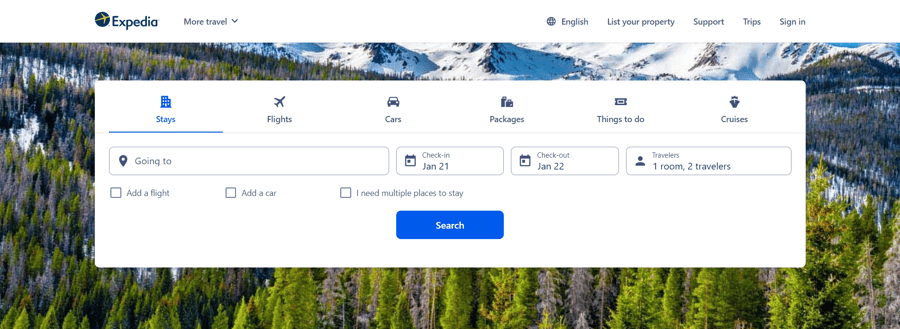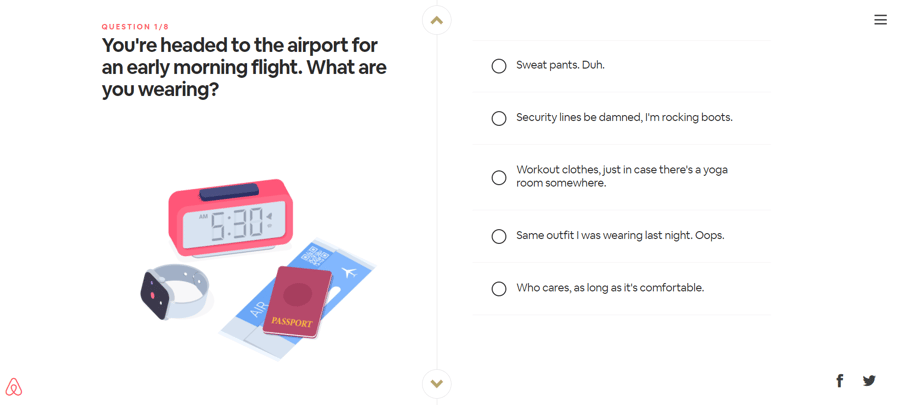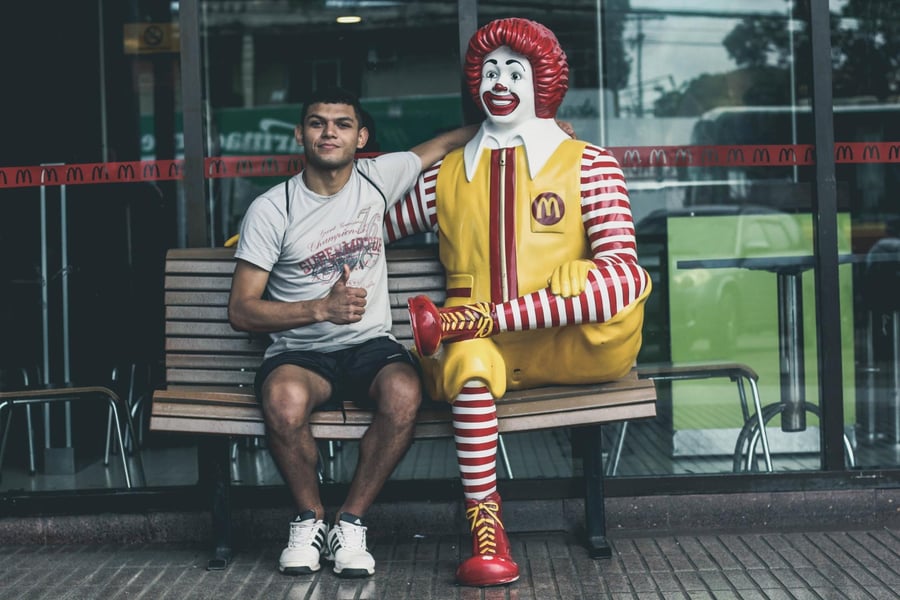
In today’s online marketplace, customers more than ever are expecting brands to understand and anticipate their unique requirements and present them with targeted, specific advertising that meets these needs.
This is added to by the rise in social media marketing becoming the go-to place to get your message across. By targeting people in the places they spend their time (Facebook, Instagram, Twitter, TikTok, etc.), brands can reach their target audiences in new and innovative ways.
But it’s not enough to simply showcase your product on these channels. The careful use of personalized marketing is vital for showcasing how your product or service can help each individual customer.
How Netflix is an excellent example of personalized marketing

Netflix is brilliant when it comes to personalized marketing. Their “recommended” section is tailored for each customer based on what they’ve watched, binged, or rated, giving you a quality selection of shows and movies to watch next.
But Netflix actually goes a step further than this, tailoring even title images to match your viewing preferences.
The hit show Stranger Things offers a great example of this. Depending on your viewing preferences, users might be shown Eleven with blood trickling from her nose, the four boys on their bikes, an atmospheric woodland scene, or even Nancy and Jonathon for the hopeless romantics.
Which do you see? And which would be the most likely to make you want to watch the show?
These are the questions you need to be considering when it comes to understanding the effectiveness of personalized marketing strategies.
Personalization in social media
While Netflix has mastered personalization on its streaming service, many companies are also seeing the value in taking this marketing strategy out of their own domains and into social media.
Now, you don’t just get to see “other customers enjoyed…” at the bottom of your shopping basket. Companies also use intelligent algorithms and data collection to figure out who you are and what you want in your daily life, targeting you in the places you spend your time: social media.
1. Retargeting campaigns

Retargeting (or remarketing) is arguably one of the most impactful tools in a brand’s marketing arsenal. It allows you to speak to people who’ve already interacted with your brand to encourage a continuing customer relationship that will last far beyond “add to cart.”
In fact, studies have shown ads that utilize retargeting are up to 76% more likely to be clicked on when compared to standard display ads.
Wish
What they do: Online marketplace Wish is an excellent example of retargeting done well. Wish remembers the things you’ve purchased in the past along with your search history to offer targeted, specific adverts featuring other products on their site. These are usually in line with your budget and rarely feature a product you’ve already purchased, so there’s always something new to see.
What to learn: Taking time to understand customers and what they’re interested in by learning from previous interactions (and subsequent interactions) ensures Wish produces personalized ads featuring products you might actually want to buy.
Expedia

What they do: When you visit Expedia without booking a trip, their retargeting system creates tailored marketing ads to be displayed on your social media page. These include “last minute deals” and a title image showcasing places similar to those you were browsing.
What to learn: Many travel agents these days are relatively good at retargeting, with messages including “planning a trip to X..?” However, Expedia’s retargeting campaign is particularly effective at creating a sense of urgency with special offers that encourage you to take the plunge now.
2. Localization principles
Localization is also a vital tool in personalized ads on social media, taking advantage of people’s different priorities and concerns based on their geographical area. This is particularly effective for global companies, which can use slightly different languages and settings in their ads, depending on where you are in the world.
Snickers: You’re Not You When You’re Hungry
What they did: Most people are probably familiar with the Snickers message “you’re not you when you’re hungry,” but did you know that the scenes and scenarios in these ads vary depending on location? For example, the U.K. had a soccer-focused Snickers ad, Australia’s ad was set at a dirt bike track, and U.S. audiences were shown a logging quarry. Not only did each ad take place in specific locations depending on where it was being broadcast, but they also featured celebrities chosen for specific locations. Elton John even appears in one of their latest U.K. ads, as seen above.
What to learn: By taking a little time to understand the places, people, and scenarios that people from different geographical locations are most likely to relate to, your ads are more likely to hit key pain points and encourage more interaction. In fact, according to Campaign, this particular Snickers campaign caused a 15.9% increase in global sales and grew its market share in almost every market in its first full year!
Charmin: #SitorSquat
What they did: Toilet paper brand Charmin developed an app that allowed people to rate local toilets by voting whether they are clean (sit) or dirty (squat). They pulled out the campaign across various social media sites with a unique hashtag (#SitorSquat) to encourage interaction and conversation.
What to learn: Even if you don’t have the budget (or inclination) to create an entire app for your social media marketing campaign, the quirky message and specific pain-point (dirty toilets) behind the ad is really what got the conversation going. If there’s an unusual pain point your customers might be experiencing, you can exploit this by providing a fun and unique way to solve the problem. This both encourages conversation and engagement while showing you genuinely care.
3. Polls, Surveys, and Quizzes
Polls and surveys have long been an effective way to see inside the minds of your customers. Giving loyal customers a chance to vote on the issues that matter to them is a great way to encourage engagement and show you as a company who’s actually interested in what they have to say.
Quizzes go a step further by actually collecting information about what makes you tick for a personalized response.
Qdoba: Queso Bliss
What they did: In 2014, Qdoba launched their Queso Bliss contest, in which their fans were able to vote on their favorite limited time quesos. The winning queso was then free on a specific day.
What to learn: There are a few reasons this marketing campaign is such a good one: 1. It engaged customers across multiple different channels. 2. It created a discussion that was easy to get involved in. 3. It was fun. 4. It created urgency: “vote now,” “limited time,” and the winning queso only being free on a specific day all provide time limits that encourage customers to actually get involved, not just think about it.
Airbnb Trip Matcher / Travel Personality Quiz

What they did: “Can’t decide where to roam this year? We’ve got you covered.” This innovative campaign allowed users to take a short Travel Personality quiz to help them pick the best destination for their next vacation.
What to learn: Not only does this campaign stand out against the saturated travel market, but it allows customers the chance to feel engaged and unique. The results are also shareable on Facebook and Twitter, allowing users to generate more interest for you. Everyone loves a quiz!
4. Personalized videos
We’re sure you’ve come across personalized videos on Facebook, particularly the ones that celebrate a “friendiversary” or other special occasions. While it might seem like a far-fetched concept for you to incorporate personalized videos into your social marketing, Cadbury has used it effectively before, and there are some less technical ways of creating unique video content as well.
Cadbury
What they did: Cadbury took information from their fan’s Facebook pages (age, location, interests… with their fans’ permission, of course) and used this to match them with a specific flavor of chocolate. They brought this together in completely personalized videos that used personal photos and information to create a truly unique marketing experience for each customer.
What to learn: Although this technology might be a little far away for many brands, the principle of using your customers’ information in unique ways to make them feel special and valued isn’t. It’s basically a more complicated/impressive version of an online quiz with a beautifully unique outcome that users can share with friends.
Blendtec: Will It Blend?
What they did: Taking a different approach, Blendtec showcased their brand-new high-powered blender by asking the question, “will it blend?”. They then took user suggestions and placed various items in the blender, sharing the results on social media.
What to learn: This fun and interactive way of getting customers involved in their marketing allowed Blendtec to show off how impressive their new product was and increased customer engagement by building suspense. The takeaway (particularly if you’re not selling a high-powered blender): find something unique about your product and let your customers have a hand in the marketing.
5. Gifts, Giveaways, and competitions
Who doesn’t love a freebie? Gifts, giveaways, and competitions have long been the go-to when a brand wants to increase its engagement, visibility, and image, and for good reason! But quality marketers will know that there is a better way of offering free samples:
Anthropologie #AnthroOpenCall
What they did: In a campaign run on Instagram, clothing company Anthropologie dipped into their fan’s interest in fashion by offering them a chance to model for the brand. All users needed to do was post photos of themselves wearing Anthropologie clothing using the hashtag #AnthroOpenCall.
What to learn: The prize in this campaign was the chance to become more involved in the brand and feel seen. Even if you’re not a clothing company, there are many ways to offer your customers once-in-a-lifetime rewards they’ll actually want. This campaign also had a second benefit, in that it increased the conversation around the brand and gave them plenty of user-generated content to utilize.
6. Charity
The final item on our list of the best ways to utilize personalization in your social media marketing is charity. Everyone loves a company that is seen to be giving back, and we look to brands to lead the way in socially responsible practices.
RYU One More Rep for Mental Health
What they did: Athletic clothing company RYU encouraged their customers to either visit their physical store locations or upload videos online of them swinging a kettlebell back and forth. For every rep, RYU would donate to mental health organizations.
What to learn: This campaign promoted conversation about the brand in a positive light, with an added element of competition that engaged fans and made the campaign incredibly shareable. It also increased foot traffic in their stores, with people either participating in-store or merely coming in to pick up workout clothes or kettlebells to participate at home. They also raised a whole chunk of cash for charity, which is even better!
Takeaways

In all the examples we’ve looked at, brands have used personalization strategies to highlight unique selling points about their brand, products, and/or services to engage customers and allow them to feel like a part of the conversation. The best campaigns made customers feel essential and involved, with shareable features that enabled user-generated content as an added benefit.
To create a quality personalized campaign, follow these steps:
- Allow people to get involved (like the Qdoba polls)
- Offer unique prizes (#AnthroOpenCall)
- Remember your customers’ preferences (Wish and Netflix)
- Make it fun (Blendtec and Charmin)
Most importantly, show your customers that you understand who they are and what makes them tick. By letting people know you understand them, you’ll be able to create an effective, personalized social media campaign that your fans are sure to love.





Leave a reply or comment below